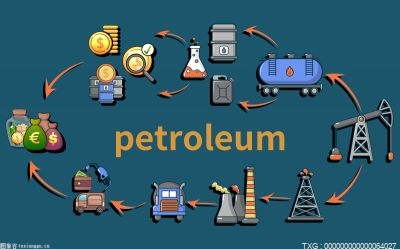【简译】英国工业革命中的农业
工业革命对农业有什么影响?
 (资料图片)
(资料图片)
工业革命期间对农业的影响是使用机器来节省劳动力和成本,如蒸汽磨机、脱粒机和收割机。食物变得更便宜了,但许多农业工作岗位流失了,更多的土地被用于耕种。
农业在工业革命中发挥了怎样的作用?
农业在工业革命中发挥了重要作用,因为机械化意味着农场工人在城市寻找其他工作,如工厂工作。方法和工具的改进也意味着人们可以生产出更多的食物,为不断增长的人口提供更便宜的食物。
Agriculture, like most other areas of working life, was greatly affected by the machines invented during the Industrial Revolution. Agriculture in Britain and elsewhere had made leaps forward in the 18th century, and its success released labour for factories in urban areas. From better iron tools to threshing machines, country life was transformed in the never-ceasing search for profit.
与大多数工作生活领域一样,农业也受到工业革命期间发明的机器的极大影响。英国及其他地方的农业在18世纪实现了飞跃性的发展,其成功为城市工厂释放了劳动力。从更好的铁制工具到脱粒机,人们以往平淡的乡村生活变成了对利润的不懈追求。
蒸汽动力在农业中的应用
In the 18th century, agricultural activities across the world continued to use people power and animal muscles to make work easier and more efficient. In Europe, and particularly in Britain, the relatively high cost of labour (compared to, for example, Asia), drove inventors to create machines that would make farming cheaper and profits higher by replacing where possible traditional sources of power with machines.
18世纪,世界各地的农业活动继续使用人力和动物来使工作变得更容易和更有效率。在欧洲,尤其是英国,相对较高的劳动力成本(与亚洲等地相比),促使发明家们创造各种机器,尽可能用机器取代传统的动力来源,以使农业成本更低,利润更高。
A change to a fundamental farming method came with Andrew Rodger's invention of the winnowing machine in Scotland in 1737. For millennia wheat had been separated from chaff by simply throwing the two into the wind and allowing the chaff to blow away. The method was effective enough, but the wind had to be not too weak and not too strong, and those days without wind at all were useless. Rodger's machine worked using an internal fan, and it was capable of separating out the grain, chaff, dust, and straw. The fan was operated by hand, but the machine was another one of those that benefitted from adding a mechanism that used steam power.
1737年,苏格兰的安德鲁·罗杰 (Andrew Rodger) 发明了风选机(玉米风选机),从而改变了传统的农业方式。几千年来,人们通过简单地将小麦和谷壳抛向风中,让谷壳被吹走,来分离小麦和谷壳。这种方法足够有效,但风不能太弱也不能太强,无风天也没用。罗杰的机器使用一个内部风扇工作,它能够分离出谷物、糠、灰尘和稻草。风扇是手动驱动的,但该机器是另一台受益于结合使用蒸汽力机制的机器。
The first steam engines to be used in agriculture were those attached to mills. Waterwheels had long been in use to move grinding stones to produce flour, but steam engines could now be used as a backup for when the water level of the river powering the waterwheel was low. Windmills had also been around a long time, but better ironwork during the Industrial Revolution meant that pieces like the sails' turning mechanism, brakes, and the fantail (which made sure the sails pointed in the direction of the wind) were better made and more efficient than ever before. From the 1860s, a new method of grinding flour, the roller mill, gradually began to replace windmills after its introduction to Britain from central Europe.
最早用于农业的蒸汽机是连接在磨坊上的蒸汽机。长期以来,水车一直被用来推动磨石以碾碎谷物,但现在,蒸汽机可以在为水车提供动力的河流水位低时作为备用。风车存在了很长时间,但在工业革命期间,更好的铁制品意味着像船帆的转动装置、制动器和帆尾(确保船帆指向风的方向)这样的部件比以前做得更好、更有效率。从19世纪60年代起,一种新的磨面机器,即辊磨机,在从中欧引入英国后逐渐开始取代风车。
By the last quarter of the 18th century, engineers had perfected the steam engine so that it was mobile and fuel-efficient enough to be used anywhere. This mobility of power was particularly useful for agriculture. In 1787, the Scotsman Andrew Meikle (1719-1811) invented the first steam-powered threshing machine (which separates grain from the husk). The machine used a drum with beaters to remove the husk, first using horse or water power and then steam power. It greatly increased the speed at which grain could be threshed. The invention was successful at home and abroad; George Washington (1732-1799) ordered a Meikle threshing machine for his own farm. Another feature of mechanization in the Americas was the introduction of machines on plantations, used, for example, to crush sugar cane. In 1834 in the United States, Cyrus McCormack invented the first mechanized reaping machine. Now a farmer need only hire a machine for when he actually needed it, perhaps only a few weeks in the year.
在 18 世纪的最后 25 年,工程师们完善了蒸汽机,使其具有足够的机动性和燃油效率,可以在任何地方使用。这种动力的流动性对农业特别有用。1787年,苏格兰人迈克尔·安德鲁(1719-1811)发明了第一台以蒸汽为动力的脱粒机(将谷物与谷壳分离)。该机器使用带有搅拌器的舱室来分离谷壳,首先使用马或水力,然后是蒸汽动力。它大大提高了谷物脱粒的速度。这项发明在国内外都很成功;乔治·华盛顿(1732-1799)曾为自己的农场订购了一台迈克尔脱粒机。美洲机械化的另一个特点是在种植园引进机器,例如用来压榨甘蔗。1834年,塞卢斯·麦考密克发明了第一台机械化收割机。农民只用在实际需要的时候租借机器,也许一年中只需几周时间。
Mobile steam engines were used to pump out waterlogged areas to make them useful for agriculture – a single machine was capable of draining 24 km² (6000 acres). Drainage trenches were cut using machines, and then pipes were laid down to better drain fields. These works meant areas of common land could be claimed for agricultural use, a process known as enclosure. As technology developed, powerful steam engines could be brought almost anywhere on a farm to uproot trees and hedges to make fields easier and more efficient to plough. Steam power was harnessed, too, for many other tasks such as cutting lumber.
移动式蒸汽机被用于内涝地区,使其对农业发展产生益处:一台机器就能排出24平方公里(6000英亩)的水。人们用机器开挖排水沟,然后铺设管道,以便更好地排水。这些工程使开垦公共土地用于农业成为可能,这一过程被称为圈地。随着技术的发展,几乎可以在农场的任何地方使用强大的蒸汽机来连根拔起树木和树篱,并使耕地更容易、更有效。蒸汽动力也被用于许多其他任务,如切割木材。
更好的工具和设备
Agriculture continued to be a major sector of employment even after the Industrial Revolution swept through Britain. In 1841, "just over 1 in 5, 22 percent of the country's workforce, worked on the land" (Shelley, 44). Even if many of these agricultural jobs still involved working by hand, the tools used were often made by precision machines powered by steam. A long-bladed scythe was found to be much more efficient than the traditional sickle. Horse-drawn ploughs now had more efficient iron blades, seed drills had more hard-wearing parts, and cutting tools had a finer and more durable cutting edge.
即使在工业革命席卷英国之后,农业仍然是主要的人员就业领域。1841年,“该国 22% 的活跃人口中,每 5 个人中就有 1 人以上在土地上工作”(Shelley,44)。即使这些农业工作中的许多工作仍然需要手工操作,但使用的工具往往是由蒸汽驱动的精密机器制造的。人们发现长刃镰刀比传统的镰刀更有效率。马拉犁现在有了更高效的铁制刀片,播种机有了更耐磨的部件,切割工具有了更精细、更耐用的切削刃。
The Rotherham swing plough was invented by Joseph Foljambe in Yorkshire in 1730. This new type of plough was made from cast iron and could better follow the contours of the land. Foljambe's plough became so popular he was soon mass-producing them in a factory near Rotherham. As with other mass-produced tools during the Industrial Revolution, Foljambe ensured that the various parts of his plough could be easily replaced with new parts when broken or worn out. Mass-produced and with a longer life of use, such tools were now more affordable to more farmers.
罗瑟勒姆摆动犁是由约克郡的Joseph Foljambe于1730年发明的。这种新型犁由铸铁制成,可以更好地顺应土地的轮廓。罗瑟勒姆摆动犁在当时很受欢迎,Joseph Foljambe很快就在罗瑟勒姆附近的一家工厂里大量生产这种犁。与工业革命期间其他大规模生产的工具一样,Foljambe确保犁的各个部件在损坏或磨损时可以很容易地更换为新的部件。大规模生产和较长的使用期限,使更多的农民能够负担得起这样的工具。
The science branch of the Industrial Revolution also made great leaps forward possible for agriculturalists. Scientists took a great interest in farming and how to improve it, which led to the formation of the Royal Agricultural Society in 1842. Joseph Henry Gilbert and John Bennet Lawes extensively tested soil types and plants in their Rothamstead Agricultural Laboratory. The results of these experiments allowed the laboratory to produce much more effective fertilizers, significantly improving crop yields from the 1860s.
工业革命的科学分支也使农业工作者的巨大飞跃成为可能。科学家们对农业和如何改进农业产生了极大的兴趣,这促使了皇家农业协会(1842年)的成立。约瑟夫·亨利·吉尔伯特和约翰·班纳特·劳斯在他们的洛瑟姆斯特德农业实验室广泛地测试土壤类型和植物。这些实验的结果使实验室能够生产出更有效的肥料,从19世纪60年代起显著提高了作物的产量。
后 续
Mechanization in agriculture reduced labour costs and so the cost, too, of foodstuffs; people ate more and better food with a direct consequence on life expectancy, particularly of children. As farming became more profitable, there were more and more cases of enclosure as people searched for more wealth. Sometimes land was claimed in this way against the wishes of the local people, since, by law, consent of 80% of the population was required, but that might be met if a single large landowner acquiesced to the enclosure. In 55 years from 1760 to 1815, over 28,300 km² (7 million acres) of British communal land was enclosed. Further, as land was made better for farming thanks to drainage projects, rents rocketed, which meant many small-scale farmers were forced to move elsewhere or try a different profession.
农业机械化降低了劳动力成本,因此也降低了食品成本;人们吃得更多更好,这对预期寿命有直接影响,尤其是对儿童而言。随着农业变得更加有利可图,人们为了寻求更多的财富,出现了越来越多的圈地行为。有时,土地的征用会违背了当地人的意愿,因为根据法律规定,需要80%的人口同意,但如果有一个大地主默许圈地,就可以满足这一要求。从1760年到1815年的55年间,超过28,300平方公里(700万英亩)的英国公有土地被圈占。此外,由于排水工程使土地更适合耕作,农业土地租金急剧上升,这意味着许多小规模的农民被迫迁往其他地方或尝试不同的职业。
A knock-on effect of industrialization was caused by the great technological developments in transport, especially the railways and steamships. As transport networks became wider, denser, and cheaper, so the goods which were transported became cheaper. Less expensive grains came to Britain from the United States and Canada. This was a much-needed development since, despite the improvement in agricultural yields at home, they could not meet the appetite of a booming population. A second technological innovation with far-reaching consequences was the invention of refrigerated transport, which meant that meat could be shipped to Britain from as far afield as Argentina, Australia, and New Zealand. Produced on vast farmlands in these countries, the imported meat was cheaper than British-grown meat. By the 1780s, Britain had moved from being a net exporter of foodstuffs to a net importer, and the deficit kept on growing into the next century. Cheaper goods was one of the contributing factors to the Great Depression in agriculture in 1873.
交通运输技术的巨大进步,尤其是铁路和轮船,引起了工业化的多米诺骨牌效应。随着运输网络变得更广泛、更密集、更便宜,所运输的货物也变得相对便宜。价格较低的谷物从美国和加拿大运到英国。这是一个急需的突破,因为尽管该国的农业产量有所提高,但仍无法满足不断增长的人口的需求。第二项具有深远影响的技术革新是冷藏运输的发明,这意味着肉类可以从远在阿根廷、澳大利亚和新西兰的地方运到英国。在这些国家生产的进口肉比英国本土生产的肉更便宜。到18世纪80年代,英国已经从一个食品净出口国变成了一个净进口国,而且这一逆差在下个世纪继续增长。更便宜的商品是导致1873年农业大萧条的因素之一。
The 1851 census in Britain revealed that, for the first time, more people were living in towns and cities than in the countryside. The rise of mechanized factories in the bigger cities, particularly in the textile industry, lured many agricultural workers to a better and more stable living in urban areas. These labourers were given a further incentive to move homes by the increased mechanization of farming and the consequent decrease in jobs. The success of agriculture, what some have termed the Agricultural Revolution that preceded and overlapped the Industrial Revolution, meant that it could withstand this loss of labour. Indeed, some historians have argued that only because agriculture was so efficient in Britain could the Industrial Revolution have taken place. This point that British agriculture helped the industrialization of Britain to begin earlier than elsewhere is summarised by J. Horn:
Agriculture represented an enormous and continuing comparative advantage. At the dawn of the industrial age, the output per worker of British agriculture was one-third greater than France's and twice that of Russia, while Europe enjoyed double the productivity of any other part of the world. By 1851, British output per worker was twice that of any contemporary European state. Not only did high agriculture productivity foster effective work habits throughout the population, but it also released labour.(68)
英国1851年的人口普查显示,居住在城市的人口首次超过乡村人口。大城市机械化工厂的兴起,特别是纺织业的兴起,吸引了许多农业从事者到城市地区享受更好、更稳定的生活。农业机械化程度的提高和随之而来的工作岗位减少为这些劳动者改变住所提供了额外的动力。农业的成功,即一些人所说的在工业革命之前并与之重叠的农业革命,意味着它可以承受这种劳动力的流失。事实上,一些历史学家认为,正是因为英国的农业非常高效,工业革命才有可能发生。J.霍恩对英国农业帮助英国比其他地方更早开始工业化这一点进行了总结:
农业代表着巨大而持续的比较优势。在工业时代来临之际,英国农业的人均产出比法国高三分之一,是俄国的两倍,而欧洲的生产力是世界上任何其他地区的两倍。到1851年,英国每个工人的产出是任何当代欧洲国家的两倍。高农业生产率不仅培养了全体人口的高效工作习惯,还解放了劳动力。
As in other areas of the economy in the Industrial Revolution where one area of working life boosted another, the success of agriculture allowed for the growth in mechanized factories in urban areas, which caused a growth in population which, in turn, created a greater market for agricultural products, further boosting the farming industry. The historian R. C. Allens argues that it was the latter relationship which was more important, "The city drove the countryside – not the reverse" (58). Although Allen also recognizes that greater efficiency in agriculture was essential to help feed the growing cities: "By 1800 each English farm worker produced enough to support two workers in manufacturing and services" (ibid).
正如工业革命中经济的其他领域一样,一个领域的发展会促进另一个领域的发展,农业的成功使城市地区的机械化工厂得以发展,这造成了人口的增长,反过来又为农产品创造了更大的市场,进一步促进农业的发展。历史学家R.C.Allens认为,后一种关系更为重要,“城市为乡村提供了动力,而不是相反” (58)。尽管Allens也承认,提高农业效率对于帮助养活不断增长的城市人口是至关重要的:“到 1800 年,每个英国农场工人的产量足以养活两名从事制造业和服务业的工人”(同上)。
There were some who fought back against the changes in British country life. Just like the Luddites, the handweavers who smashed textile machines that took away their livelihood in cities, so, too, farm labourers attacked, for example, the new threshing machines. One period of wrecking was particularly intense and became known as the Swing Riots (after their legendary leader Captain Swing) of 1830 to 1832. The Swing Rioters might have won the public's sympathy, but the government was determined on 'progress' so that hundreds were imprisoned, transported, or hanged while the pitiless machines kept on turning regardless in the fields, just as they did in the factories.
有些人反对英国农村生活的变化。就像Luddites(手织者)一样,他们砸毁了夺走他们在城市中生计的纺织机,同样,一些农场工人也摧毁了新的打谷机。有一个时期的破坏活动特别激烈,被称为1830年至1832年的“斯温暴动”(以其传奇性的领导人斯温上尉的名字命名)。斯温暴动者可能赢得了公众的同情,但政府决心要实现“进步”,因此数以百计的人被监禁、押送或绞死,而无情的机器在田间继续转动,就像它们在工厂里一样。
参考书目:
Allen, Robert C. The British Industrial Revolution in Global Perspective . Cambridge University Press, 2009.
Armstrong, Benjamin. Britain 1783-1885 . Hodder Education, 2020.
Dugan, Sally & Dugan, David. The Day the World Took Off. Channel 4 Book, 2023.
Forty, Simon. 100 Innovations of the Industrial Revolution. Haynes Publishing UK, 2019.
Hepplewhite, Peter. All About. Wayland, 2016.
Jeff Horn & Leonard N Rosenband & Merritt Roe Smith. Reconceptualizing the Industrial Revolution . MIT Press, 2010.
Yorke, Stan. The Industrial Revolution Explained& Massive Wheels. Countryside Books, 2005.
原文作者:Mark Cartwright
驻意大利的历史作家。他的主要兴趣包括陶瓷、建筑、世界神话和发现所有文明的共同思想。他拥有政治哲学硕士学位,是《世界历史百科全书》的出版总监。
原文网址:https://www.worldhistory.org/article/2191/agriculture-in-the-british-industrial-revolution/
X 关闭
推荐内容
- 海南:迈湾水利枢纽工程进展顺利
- 与“世”偕行 共赢未来——从进博会看中国“入世”20年
- 北京迎来初雪 气温急剧下降
- 推进历史学与考古学融合发展(史家笔墨)
- 文化遗产保护的可贵探索(传承之光)
- 北七家镇和区市场监管局10名干部被问责
- 今日立冬:北风潜入悄无声,未品浓秋已立冬
- 民航局:严格执行国际客运航班熔断措施 今年已熔断航班4
- 税收服务提质增效 外资企业畅享政策红利
- 政策红利“精准滴灌” 税收服务“护航”进博会
最近更新
-

【简译】英国工业革命中的农业
滚动 -

环球动态:“蜘蛛侠”来了?!是热心邻居来救火啦!
滚动 -

3个月30套方案,18名南华学子设计毕业纪念品 最新消息
滚动 -

工伤赔偿费用都有什么 短讯
滚动 -

4-2!卢卡库世界波+梅开二度,国米豪取七连胜,三线作战高歌猛进|今日要闻
滚动 -

等闲识得东风面全诗译文_等闲识得东风面
滚动 -

失恋进行曲钢琴谱左右手指法_失恋进行曲钢琴简谱数字-热点
滚动 -

hiv_H施瓦泽_环球微动态
滚动 -

【时快讯】了不起的江苏人丨上月带着“最牛回访团”返苏,唐英年:苏港深度合作大有可为
滚动 -

全球报道:澳大利亚劳务输出办理什么签证_澳大利亚劳务输出
滚动 -

天天快资讯丨知恩于心更要感恩于行
滚动 -

阿尔巴尼亚语你好(阿尔巴尼亚语你好怎么说)
滚动 -

望庐山瀑布的背景故事与解析_望庐山瀑布写作背景
滚动 -

世界焦点!抗美援朝一等功臣张群生逝世,享年97岁
滚动 -

如何做好销售工作的5个方法_如何做好销售工作-环球微头条
滚动 -

天天热文:什么蔬菜水果含硒最多呢_什么蔬菜水果含硒最多
滚动 -

扑天雕李应到底有多厉害?武艺可能仅次于卢俊义
滚动 -

撩妹段子手(撩妹段子) 世界热资讯
滚动 -

全球微动态丨听了这本书的人!19年初都抄到底了《股市进阶之道》
滚动 -

容知日新:5月12日融券卖出6449股,融资融券余额6677.37万元_当前速递
滚动 -

环球观察:神探狄仁杰2王孝杰_神探狄仁杰2演员表
滚动 -

股票行情快报:光库科技(300620)5月12日主力资金净卖出2185.03万元
滚动 -

新舟700飞机参数
滚动 -

蜜哆哆炸鸡_咪哆哆
滚动 -

巴萨球王接班人:梅西不是最强队友!最感谢小罗亨利哈维小白_环球今亮点
滚动 -

男子开铲车连撞多车和行人,警方通报
滚动 -

上海:国际数据港帮助中国企业“走出去”-当前快播
滚动 -

时隔9年,上汽通用换帅:王永清调任上汽集团,庄菁雄成“新掌门”
滚动 -

驻法大使卢沙野将被召回?官方回应事件简单介绍|全球今日报
滚动 -

全球快看点丨肝脏问题会容易睡不着吗?
滚动 -

港股收评:恒指跌0.59% 京东集团绩后涨超7%
滚动 -

夏季来临,你的防晒衣准备好了吗?快来伯希和挑选吧_全球报道
滚动 -

7000左右的电脑配置单2020_7000元电脑配置单
滚动 -

快资讯丨“快餐式”友谊,你会“搭”吗
滚动 -

bor tobeloved tobeloved
滚动 -

公司问答丨日联科技:目前公司在手订单量充足
滚动 -

梦幻西游人族基本属性_梦幻西游 人族什么属性成长高
滚动 -

全球信息:货车高速上左右摇摆 司机疲劳驾驶险酿大祸
滚动 -

农村母女嫌路边冷藏车太吵 要求关掉制冷机未果 一砖砸碎车玻璃
滚动 -

肯特催化::财务科目更正多,却仍与大客户数据“打架”,还拥有着“神奇的朋友圈”|IPO观察
滚动 -

前沿热点:《我在北京送快递》:一个平凡人审视生活的范本
滚动 -

今亮点!“AIGC浪潮来临,该更看重AI还是内容?”技术突进下内容创作蝶变进行时
滚动 -

每日信息:高三高原反应怎么缓解的决方法什意思
滚动 -

所得税费用科目_所得税费用属于什么科目_环球热议
滚动 -

环球即时:充电平台泄露个人信息,信息安全已成充电桩面临的主要问题
滚动 -

全球微资讯!武昌区积玉桥街道:“健步行”助力长江大保护 共同缔造美好生态家园
滚动 -

充电桩,谁是盈利最强企业?
滚动 -

今日精选:caco3溶于水吗_caco3
滚动 -

新款丰田卡罗拉将于5月份进入市场,新车有何升级?
滚动 -

海南省白沙县2023-05-11 10:24发布雷电黄色预警
滚动 -

不是李霄鹏,山东鲁能新帅基本锁定,3选1,亚冠名帅或成黑马_天天滚动
滚动 -

公司问答|奥雅股份:与中文在线合作细节尚未敲定 或在数字版权方面展开合作 观察
滚动 -

当前快报:话剧《半个月亮掉下来》首演
滚动 -

全国首单湿地生物多样性保护保险落地晋江 快讯
滚动 -

5月11日 10:22分 可川科技(603052)股价快速拉升 观点
滚动 -

[路演] 飞凯材料业绩说明会:利用规模化和精细化生产模式优化成本结构|视焦点讯
滚动 -

奥比中光:5月10日融券卖出3.02万股,融资融券余额5395.59万元
滚动 -

当前热议!看得见山、望得见水、记得住乡愁 外国网红打卡商丘时庄文化艺术村(视频)
滚动 -

富民近3万亩杨梅熟了入园采摘正当时|天天快报
滚动 -

draw是什么意思网络用语_draw是什么意思
滚动 -

世界快资讯丨黑枸杞能加热食用吗 黑枸杞能高温煮吗
滚动 -

定了!辽篮大胜郭艾伦却传坏消息,最大遗憾难以弥补
滚动 -

世界今热点:加速回暖!4月乘用车市场零售达163万辆,新能源渗透率超30%
滚动 -

【速看料】水稻缺少钾肥的表现现状是什么
滚动 -

当前关注:难忘我们的红蓝时光,皮克、小白寄语布斯克茨
滚动 -

周口市委书记张建慧到淮阳区和川汇区调研项目建设工作
滚动 -

公交服务急乘客之所急!点滴温暖为文明城市不断增色-天天热消息
滚动 -

涓緣鏈熻揣鍘熸补鏃ユ姤20230510锛氬競鍦烘殏缂轰富瀵奸┍鍔紝鍏虫敞OPEC鏈堟姤浜ц兘鏁版嵁|消息
滚动 -

世界热点评!【国际漫评】“你们就地避难吧!”
滚动 -

如何查询名下的支付宝有几个帐号_什么是支付宝帐号
滚动 -

室内装修费收取标准_2023年装修价格各项费用明细 全球今热点
滚动 -

孙义全为首次从北坡攀登珠峰进行高海拔拉练
滚动 -

开玩笑还是小题大做?LCK官方暗示MAD晋级,T1强烈抗议 全球今日讯
滚动 -

全球热点!2023年艺考生高考志愿填报技巧
滚动 -

关于外来入侵物种福寿螺,你真的了解吗?-世界热门
滚动 -

得润大厦已经交付使用了吗?得润电子:目前尚未交付使用
滚动 -

吴涤清烟花三月下扬州原版_吴涤清 当前动态
滚动 -

怎样给皮肤补充胶原蛋白? 焦点短讯
滚动 -

基金涨跌是人为控制的吗 跟什么有关
滚动 -

快报:宅基地有偿使用收费不合理怎么办?如何申请减免有偿使用费?
滚动 -

年内逾百家上市公司拟以集中竞价方式回购股份 新能源产业链公司意愿较强|快资讯
滚动 -

焦点快播:因材施教的成语解释(因材施教是教学中一项重要的教学方法和教学原则)
滚动 -

应急部:今年重特大事故有所反弹 传统高危行业领域事故较集中 简讯
滚动 -

焦点速读:交易商协会对两家银行启动自律调查 前三年已依规自律处分近300家机构
滚动 -

罗云峰与陈海龙举行工作会谈
滚动 -

世界播报:北京:支持企业开展“信创应用+人工智能”融合创新 推进信创产品智能升级
滚动 -

当前信息:天振股份:5月9日融资买入127.73万元,融资融券余额4342.55万元
滚动 -

稳步前行!兴庆区全力推进重点项目建设
滚动 -

异动快报:汇源通信(000586)11月24日9点35分触及涨停板|焦点快看
滚动 -

购销两旺带动农民增收 江苏徐州3万多亩西瓜成熟上市
滚动 -

卡恩:我们不愿为哈兰德打破薪资结构,奥斯梅恩有同样风险
滚动 -

机构:今年全球对冲基金发行数量为2017年以来最低
滚动 -

前沿热点:xlsx用什么软件打开excel xlsx用什么软件打开
滚动 -

高龄能不能转行做程序员? 世界速看料
滚动 -

环球今日讯!中央气象台:我国东南部及南部海域将有6~7级风
滚动 -

注射用头孢噻肟钠的不良反应_注射用头孢噻肟钠舒巴坦钠有什么作用
滚动 -

【天天新要闻】光影还原宫殿建造,AR再现古代生活,杭州南宋德寿宫遗址博物馆——遗址“生长” 文物“说话”(解码·文化数字化)
滚动 -

四月ETF净申购份额超五百亿份,资金借道涌入医药、半导体等行业
滚动 -

出芽生殖的生物有原核吗_出芽生殖的生物
滚动 -

开发商破产清算,没“拿证”的房子要被“查封”?法院:别急,可以要回来 环球简讯
滚动
Copyright © 2015-2022 海峡餐饮网版权所有 备案号:皖ICP备2022009963号-10 联系邮箱:396 029 142 @qq.com


